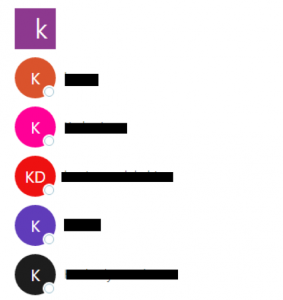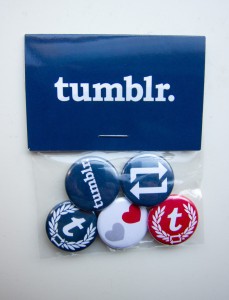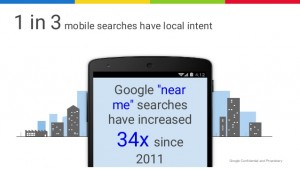“Nobody remembers who came in second.”
Peanuts creator Charles Schulz certainly knows a thing or two about winning. Or losing. One thing he and other go-getters agree on is that coming in second doesn’t make you less of a loser. Or shall we say second place is a first place loser? However you view a bridesmaid finish, second place is something that should never interest anybody.

Certainly not marketers who want high conversion rates, heightened engagement, boost in traffic and revenue, brand loyalty, etc. Among the most tensed and most aggressive war zones is social media, and winning in this arena could mean the (virtual) world to a digital marketer. Social media is a tough universe. Consider this: almost everyone has a social media account but a 2014 report by Gallup found that 62% of consumers claim that branded content and brand messages on social media do not affect their purchasing decisions. So is maintaining social media pages for your business an exercise in futility? How do you turn an ineffective business account into being among the best social media pages? First things first — don’t think second is good enough. There is a thin line but a whole lot of difference between social media winners and social media second placers. It is best to fine tune your marketing strategies to the characteristics of social media winners so everyone, as Schulz put it, remembers you.
Engagement vs. Likes
Are you happy with just a thumbs up, a re-tweet, a mention, or a regram? These are all good things but a real winner goes beyond likes, favorites, and views; he goes for engagement. There are several reasons why someone “likes” a page on Facebook. His friends liked the page or he liked the page as a favor. However, soon after he liked it, he forgets all about it. If that means success to you, then we got a problem.
Engagement rate provides a clearer picture of what is happening. It is more valuable because it shows how many and how often people interact with your brand and your content. One way to measure engagement on Facebook is by getting the number of “people talking about this” and dividing it by the total number of likes. An article on Social Media Today puts the acceptable engagement rate at the range of one to two percent.
Second placers obsess on trying to get more people to like their page but winners work hard to engage, interact, and connect with the audience consistently.
Relevant content vs. promotional content
People do not trust advertising. If you are acting like an advertiser on social media, you are likely pushing your audience away. Research firm Lab 42 found that 76% of consumers believe that ads in general are “very exaggerated” or “somewhat exaggerated.” A majority also believes that most ads are photoshopped and altered. The lesson: stop with sponsored posts because consumers are totally not buying it.
In a related study by CMO Council, 60% of fans say they expect to interact with other customers and share experiences while 50% expect to find service and support. When it comes to social media marketing, content for content’s sake is worthless. Too much promotional content will kill any digital marketing strategy. It could actually be a good thing that several social networking websites have stricter rules against them. Do not be a blowhole that spews nothing important; add value with every post. A compelling social media content that works is one that is relevant, useful, helpful and even funny, cool, and sexy.
Channel vs. tool

Social media is a platform, it is a tool. Well, at least for second placers. It is going to remain a “set of tools” if that’s what you intend it to be. But top social media pages know better: tools change but conversation never has.
Second placers look at social media as a tool, an object. Winners see it as a channel or a medium for real human conversations. Winners have that humanistic approach that is personal and honest. They just don’t go out there and say “buy my product” or “try me out.” They are not afraid to get involved with a customer even if that means resolving dissatisfaction. They go beyond responding to complaints and praises but monitors activities so they can strike a conversation whenever appropriate.
Targeted vs. all-over-the-place

It is easy to understand why some social media marketing agencies get a little too excited in creating several accounts and bombarding followers with posts. Social media is a world of endless possibilities and opportunities. The assumption is: if you have an account in every social networking website, the more people you will reach. This could be true but as to whether your content would matter in every platform is another story.
How many accounts should you maintain? How much content should you post? There is no definite answer. The key is to segment your audience. You have to really understand them if you don’t want your marketing efforts to go to waste. Not because everyone is on Facebook means you should be, too. Identify your audience and know where they are. Tailor-fit your content to the platform and the audiences in that platform.
Experience vs. look
When it comes to crafting a social media page design, most obsess about color, graphics, and font. Second placers care about the “look.” There is really nothing wrong with that but if you want to be a winner, go beyond the look and work for customer experience. When creating a social media page for a business, focus on easy navigation, fast loading, mobile compatibility, and the works. Make it fun, consistent, and visually engaging.
Focused branding vs. trying too hard

You can’t be everything for everyone. When it comes to branding, you have to be clear on what your brand stands for. Some marketers make the mistake of being everything to their consumers, promising too many things, and playing several roles. It’s like a classroom composition — when you’re the funny man, you are the funny man. You could be a little smart, too, but you’re still the funny man. Trying to be everything all at once gives the impression that you are second-guessing on what your brand represents. Be focused, find your voice, and be consistent.
“Bring it on” vs. “if it ain’t broke, don’t fix it”

Social media is an ever-evolving platform. Users evolve with it, too. If you have mastered Facebook or Twitter, then good for you. But if you are going to be stuck, you will be missing out on a lot of opportunities and you won’t get any better. Remember that tools such as social media come and go. Real winners are fearless and are adaptive to trends and changes. They say, “bring it on” or they’ll get left behind, and end up in second place.
Social media may be a tough platform but nothing that real winners cannot conquer. When creating a social media page, let it stand out with relevant content and remarkable customer experience. Do not get sidetracked with short-term goals because trust and loyalty are worth more than that.
(107)







